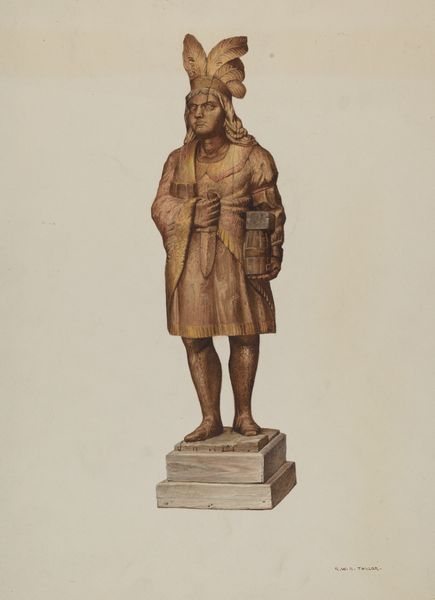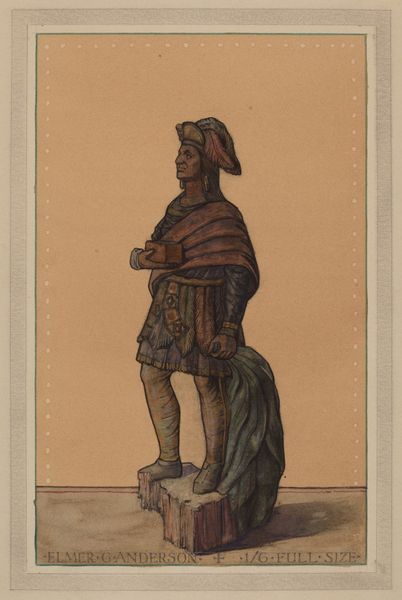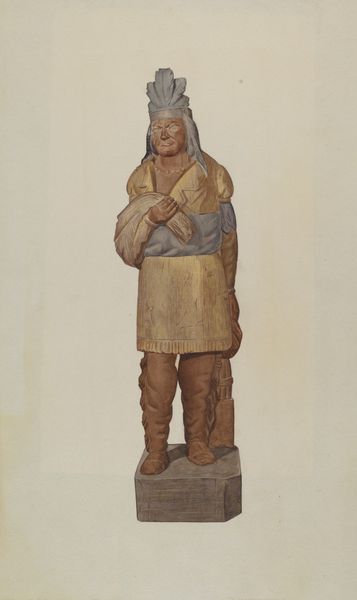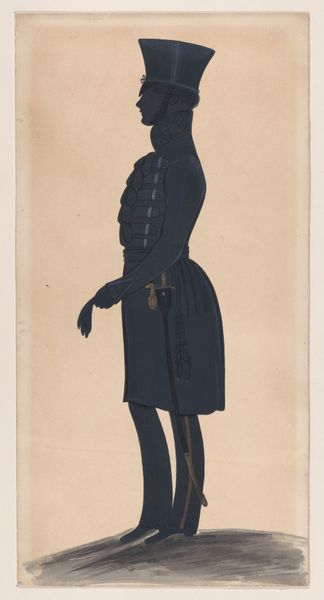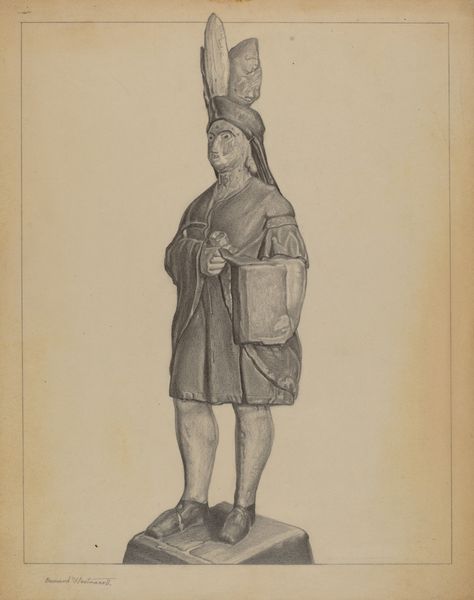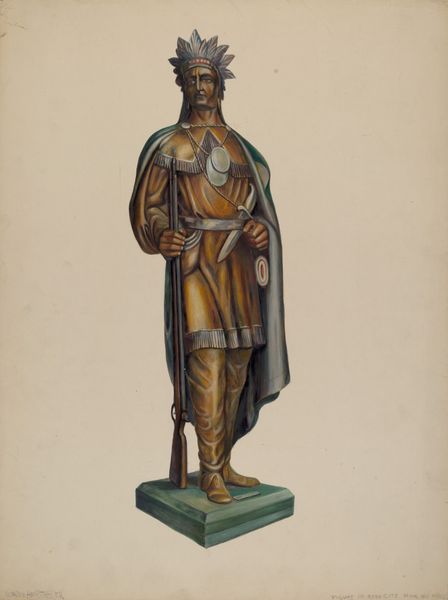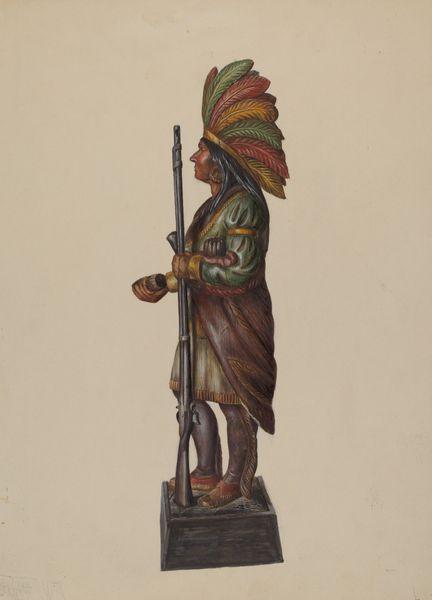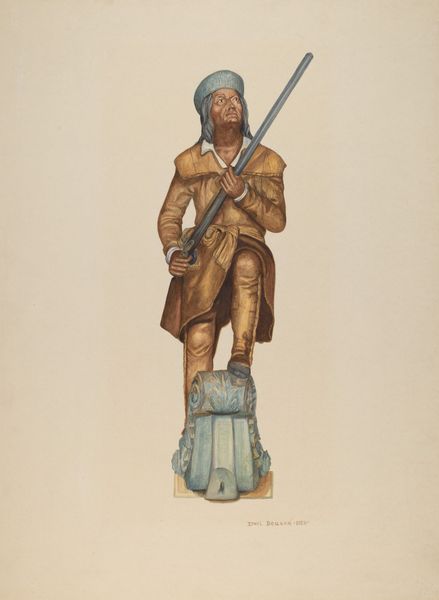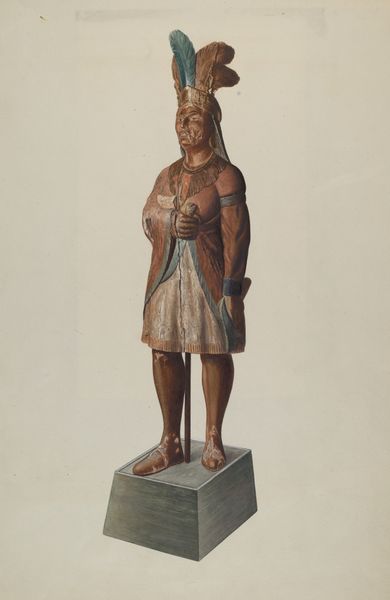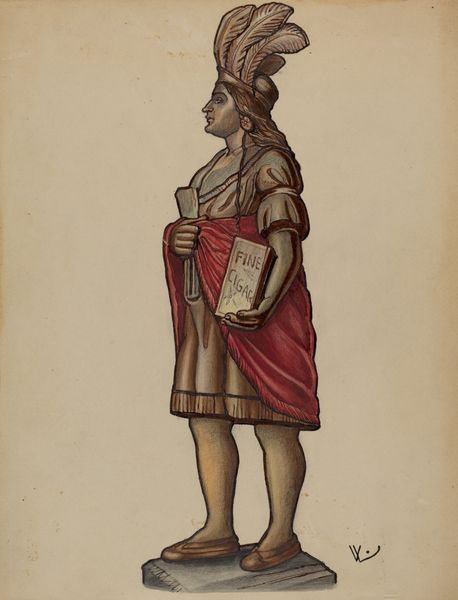
drawing, coloured-pencil
#
drawing
#
coloured-pencil
#
charcoal drawing
#
coloured pencil
Dimensions: overall: 35.6 x 24.2 cm (14 x 9 1/2 in.)
Copyright: National Gallery of Art: CC0 1.0
Curator: At first glance, I see a solemn sentinel. The pose is static, but the eyes, though shaded, hint at watchfulness. It’s rendered in coloured pencil, and it has a certain weight to it. What do you see? Editor: What we are looking at here is a work by Elmer G. Anderson, likely dating to around 1936. It’s called "Cigar Store Indian," and it reflects the history of Indigenous representation in the United States, particularly how these images were often commercialized. It prompts questions of cultural appropriation and how Native American figures have been historically exploited and misrepresented in the broader marketplace. Curator: Ah, yes, there's definitely that sense of—what's the word—relic, maybe? A kind of echo of the past resonating from the drawing's aged color palette. What is the history of cigar store figures anyway? They are undeniably icons, almost mythological beings guarding something—even when you are just selling cigars. Editor: In the 19th and early 20th centuries, these figures were a common sight outside tobacco shops. Often carved from wood, they served as advertisements. But they also perpetuated stereotypes about Indigenous peoples, reinforcing a problematic and simplified idea of "the noble savage," usually bereft of a personal narrative. The coloured-pencil medium here almost softens the object itself. Curator: Absolutely, they carry that weight—that historical context you mentioned. Yet, paradoxically, seeing it re-rendered here—not as a carving, but a drawing—makes me think of the mutability of images, how they shift, adapt, take on new layers of meaning with each generation. It also suggests a certain personal interest or commentary by Anderson in choosing to re-present a very fraught object as a personal work of art. Editor: Precisely, it prompts us to consider what it means to represent an object of representation, to consider what the artist's motivation might have been, and whose narrative gains or loses prominence in that transfer. Looking at how the colour is applied—almost lovingly to details like the adornments across his torso, but not giving an ounce to the missing hand—makes me wonder if there is more in it than Anderson may have intended. Curator: Indeed! This one work seems to be a locus for so much—art history, Indigenous studies, and this undercurrent of questioning and reconsideration. And even a simple drawing offers the space to look through the layers! Editor: Exactly, even just one work offers complex engagement. I always find this kind of careful re-examination especially enriching in the contemporary moment, because we see through the images of the past while still acknowledging the past that they represent.
Comments
No comments
Be the first to comment and join the conversation on the ultimate creative platform.

